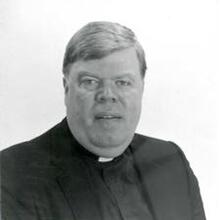Pro-life activists of a certain age remember Jan. 22, 1973, with photographic precision.
Then an undergraduate at Penn, I was typing an article on organic farming in the offices of The Pennsylvania Voice, the alternative newspaper. The Supreme Court had just delivered the decision in the Roe v. Wade case that instituted a regime of virtual abortion-on-demand. A fellow editor argued that since the decision had been made by the margin of seven to two, we just had to accept it: “The abortion debate is over.” Another editor kindly pointed out that I strongly opposed abortion and that it must be a difficult day for me.
I was in fact a recent convert to the cause. I had started my college years on a pro-choice syllogism: 1) My religion opposes abortion; 2) I personally oppose abortion; 3) I don’t want to impose my religion on others; 4) Therefore, abortion should be legal. My syllogism soon collapsed. A lecture by an agnostic biologist on fetal development convinced me that the humanity of the nascent child was not a matter of sectarian doctrine. A symposium on logic indicated that by my own pro-choice logic, I would have to become an anarchist, since there was virtually no civil law not opposed by someone on the basis of religious conviction.
But there were also Pascalian reasons of the heart. During my collegiate summers I worked as a counselor at a day camp for people with mental disabilities. My solidarity with them instinctively made me a defender of their lives. Then as now, campaigns in favor of abortion, infanticide and euthanasia viewed the disabled as targets of choice.
Forty years later, the shock of Roe v. Wade remains. Its blanket dismissal of the claims to legal protection for human beings on the eve of birth still scalds. But Roe did not and could not have the last word.
As the pro-life movement continues its resistance, the case against abortion has become stronger than ever. The omnipresent sonogram has graphically advanced it. Expectant couples decorate their refrigerator doors with the latest snapshot of Emma’s or Ethan’s adventures in the womb.
Recently, an English couple planning an abortion because of fetal disability changed their mind when they saw their child “smiling” in a sonogram. It has become increasingly difficult for us to recognize the humanity—indeed, the complex personality—of the child in the womb and then claim to be agnostic about when human life commences.
If abortion remains the central issue, the landscape of our battle has changed over four decades. Euthanasia and infanticide are no longer distant threats. In Belgium recently, a doctor euthanized two deaf brothers who feared that they would become blind. There was neither intractable pain nor terminal disease. In the tony Journal of Medical Ethics, two ethicists recently coined a new euphemism for infanticide: “post-birth abortion.” And they’re for it. As always, it is the disabled who perish as the goalposts of personhood are shoved further away.
The pro-life movement has become intertwined with the effort to defend the rights of conscience. It is no accident that our bishops’ noble campaign to defend religious liberty is very much a crusade to oppose legal efforts to force health care workers to participate in abortions, nursing homes to facilitate physician-assisted suicide, pharmacists to distribute abortifacients and employers to finance the destruction of human life and of the very capacity to give life. Decades ago, the campaign to legalize abortion and euthanasia appealed to privacy. But it has since become an effort to make every citizen an accomplice in the culture of death under the rubric of access.
For those of us called into the pro-life movement, the defense of the right to life of the innocent can never become just one cause among others. It is the great cause, as compelling as our ancestors’ struggle against slavery or on behalf of labor. As our bishops have reminded us, the struggle to protect the lives of the vulnerable at the dawn and dusk of existence is the pre-eminent civil rights issue of our age. When the right to life recedes, the entire edifice of human rights buckles.
As we turn 40, we will not be silent. We cannot be. The great cause still beckons.








